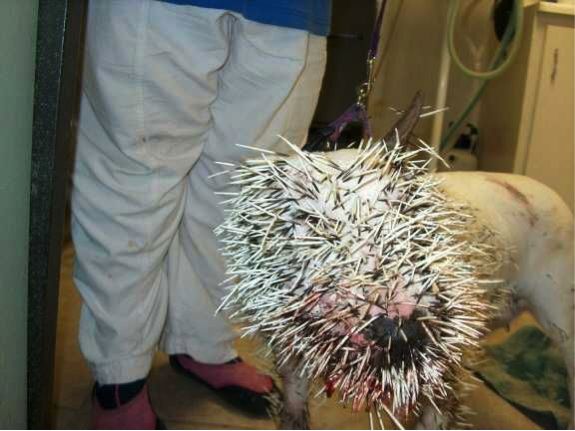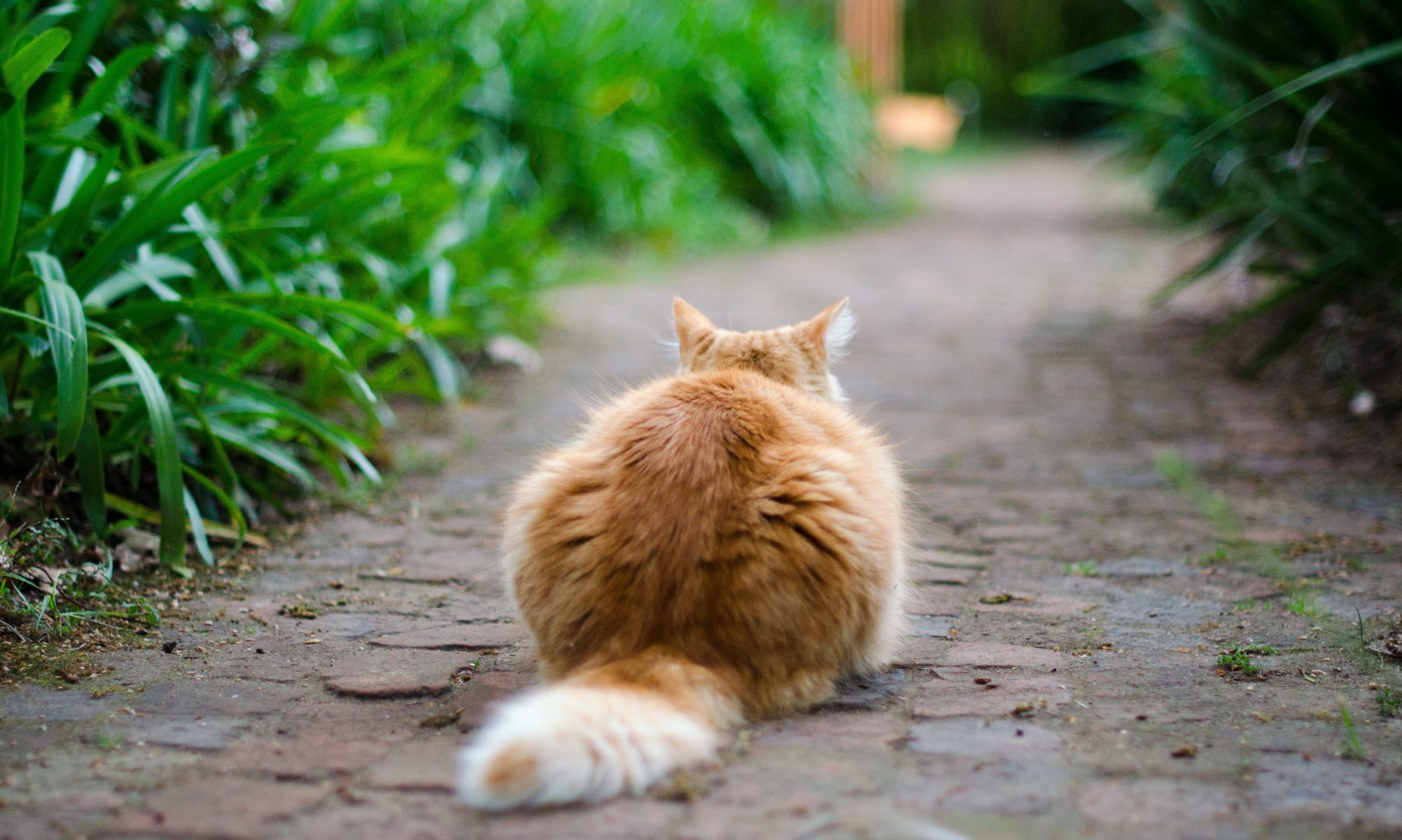
A few things to keep in mind: keep Fido on a short leash. Dogs love to chase any of these guys. Skunks, porcupines, and raccoons all tend to be fairly slow movers, plus in areas where garbage is plentiful they are often overweight so they tend to waddle along clumsily which makes them great sport for your dog. The problem is they all have great defenses, and when they meet your pet, the outcome is likely to be unpleasant, not to mention possibly expensive.
Remember that all three species tend to be attracted to garbage, most often at night, so keep your site clear of food and garbage and keep your pet close at hand at night. If you find it necessary to take your pet for a walk after dark make it a short one on a short leash, and stay away from the garbage sites. If you follow these simple rules, you probably won’t have much of a problem since wild animals usually prefer to avoid contact with humans and pets.
Porcupines have natural defensive instincts and a very effective means of self-protection. When approached by a potential predator, they tend to curl into a ball so that their relatively unprotected underbelly is inside the ball. All your hotshot dog runs into are the quills. If you have the opportunity, just turn around and go the other way – drag the dog away if you must – because most dogs just can’t resist the temptation to molest this seemingly helpless victim. Rover will first paw at the curled up ‘porc’, which results in a number of quills stuck in his foot. Then the dog may stick his nose down to sniff at the animal and get a few stuck in his muzzle. Finally our best friend may actually try to bite the curled up rodent and end up with a mouthful and possibly a face covered with spines. In the heat of the attack some dogs just don’t have any sense at all and the result can be a mess. Once the adrenaline of the attack has worn off, the injuries can be really painful.
If there are more than a few quills or if your dog is the really sensitive type, get her to a veterinarian immediately. The longer the quills are in place, the more the quills will soften up, and the more difficult they will be to remove properly. Removing them is extremely painful, so sedation or even anesthesia may be the order of the day. Don’t get that macho attitude and think it’s a simple task. Often the quills are lodged in the mouth or even the roof of the mouth, between the teeth, between the toes, and other places where you can’t even see. If there are only a couple of quills and they are easily accessible and your dog is easy to handle you can give it a try. You will need two tools (preferably pliers) – one to hold the skin down firmly (a slightly open pair of pliers placed loosely around the quill at the skin line works nicely for this) while you firmly grasp the quill near the skin with a second pair of pliers and give it a quick but hard pull. (When sedated, I prefer a slow steady pull. I think slow and steady is less likely to break the quill, but slow and steady hurts a lot more when the patient is awake.) Do each individual quill. If you try to rush it or attempt to pull more than one at a time, they will probably break off. If they have been left in place for too long, they will probably not come out cleanly and you will leave a fragment behind which can fester up and cause an infection. Also, quills lodged in a tendon or around the eyes can cause more serious problems. Again, your best bet by far is to get the dog to a vet ASAP and let him or her do a proper job of it. If you are in porcupine country the local vets will know exactly what to do. And do not try to cheap out on the sedation. For the good of the patient, it’s important.
Skunks are a critter of a different color. If your pet encounters a skunk, you will need a pair of rubber gloves and some soap and water. First give the pet a normal bath. Try to wash out any large glops of skunk spray. Then, to remove the stench you can use a commercial skunk preparation or you can pick up a large can or two of tomato juice and use that; or you can try the following concoction, which has been known to work just as well as pretty much anything else:
1 Quart of hydrogen peroxide – standard drug store formula
½ Cup baking soda (sodium bicarbonate)
1 Tbsp dishwashing detergent (Dawn, etc.)
Whatever you are using, after the pet has first been bathed, take your time working the product into the coat thoroughly, then rinse with clear, fresh water and repeat the whole process over again. Most of the time you will not be able to remove all of the odor, but it should get rid of the really strong reek and get things down to the point where the pet may be just moderately fragrant. If there is evidence of eye irritation from the skunk spray, flush the eyes with a plain eye irrigating solution and get her to the vet.
Finally, raccoons will usually ramble off or maybe climb a tree if given the chance. If they are cornered they can and will fight, often viciously. Save your pet the grief and the pain of some nasty lacerations and puncture wounds. If there is an encounter get the pet in to be looked at by a veterinarian. She should at least get an antibiotic injection and may need to have those wounds clipped up and cleaned out.
All of these problems can be avoided relatively easily by simply keeping your pet on a leash – shorter is better than longer. And keep her indoors at night. You’d be surprised how much trouble a dog can get into on one of those long retractable leashes. A leash isn’t punishment, it’s your dog’s best friend; and, more times than you might realize, it may actually be your pet’s salvation.
Please share this article with others.

